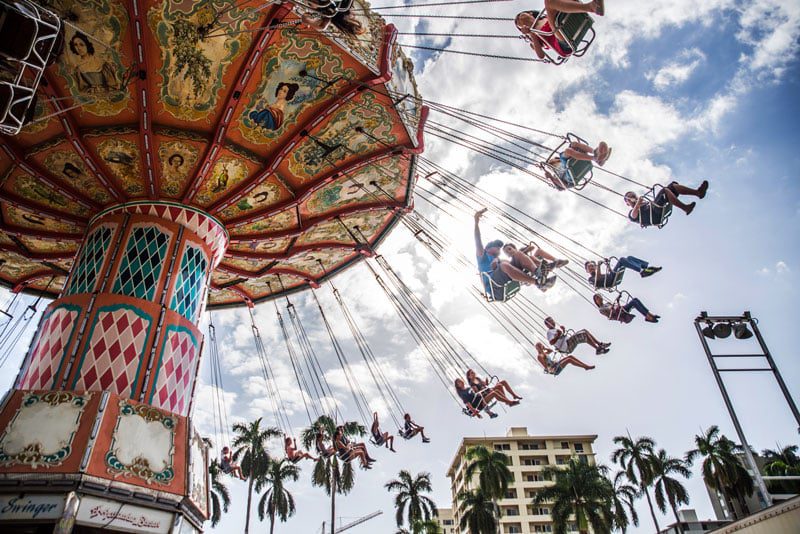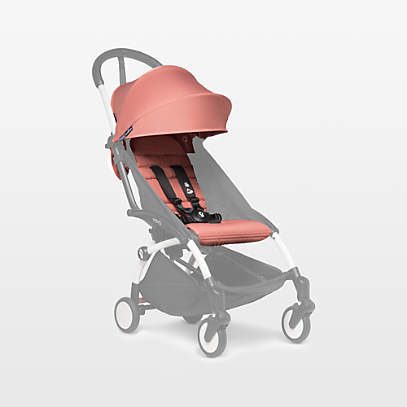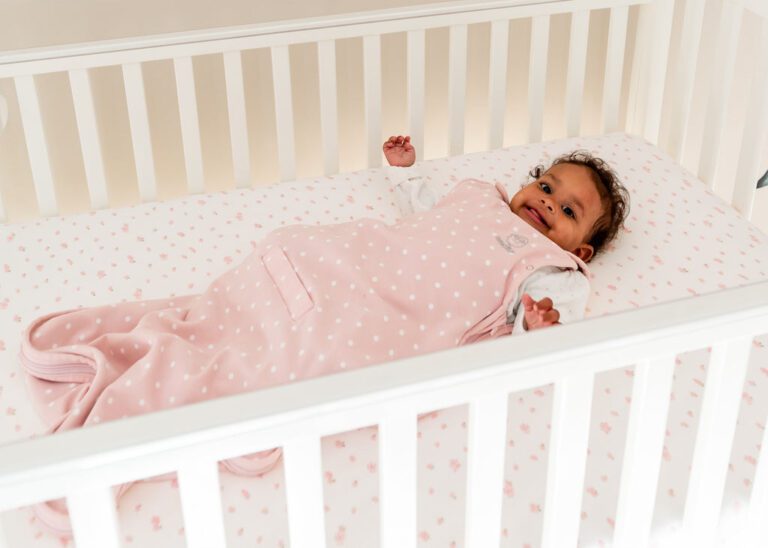How to Put Baby in Park Swing: The Ultimate Guide
To put a baby in a park swing, wait until your baby is at least six months old and can sit up and control their head. Doctors recommend using outdoor baby swings for children between six months and four years of age.
:max_bytes(150000):strip_icc()/vwf-primary-car-seta-stroller-combos-dburreson-001-98eca77f05084366b30e1afcb2bb2809.jpg)
Credit: www.verywellfamily.com
Choosing The Right Baby Swing
When it comes to keeping your little one entertained and comfortable while you’re at the park, a baby swing is a great choice. But with so many options available, how do you choose the right one for your baby? In this guide, we’ll explore the factors to consider, the different types of baby swings available, key features to look for, and important safety considerations. By the end, you’ll be equipped with the knowledge to make an informed decision when it comes to choosing the perfect baby swing for your little one.
Factors To Consider When Choosing A Baby Swing
Before diving into the various types of baby swings available, it’s important to consider a few factors to help narrow down your options. Here are some key factors to keep in mind:
- Age and weight limit: Different baby swings have different recommended age and weight limits. Make sure to choose a swing that is appropriate for your baby’s size and developmental stage.
- Swing motion: Baby swings can have different types of motion, such as back and forth or side to side. Consider which type of motion your baby prefers or find soothing.
- Power source: Baby swings can be battery-operated or plug-in. Think about your preferred power source and what is most convenient for you.
- Portability: If you plan on taking the swing to different locations, a portable and lightweight option may be preferable.
- Space availability: Consider the space you have at home or in your yard for the swing. Some swings are compact and ideal for small spaces, while others may require more room.
Different Types Of Baby Swings Available
Now that you’ve considered the important factors, let’s explore the different types of baby swings available:
| Type of Swing | Description |
|---|---|
| Full-size Swing | A larger swing that often comes with additional features like music, lights, and multiple swing directions. |
| Portable Swing | A smaller, lightweight swing that is easier to transport and suitable for traveling. |
| Convertible Swing | A swing that can be converted into a stationary seat or a rocker, providing versatility as your baby grows. |
Key Features To Look For In A Baby Swing
When choosing a baby swing, there are certain features that can enhance the overall experience for both you and your baby. Look for the following key features:
- Comfortable seat: A well-padded and supportive seat will keep your baby cozy and secure.
- Adjustable speed and motion: The ability to adjust the speed and motion of the swing can help you find the perfect setting for your baby.
- Entertainment options: Some baby swings come with built-in toys or mobiles to keep your baby engaged and entertained.
- Easy to clean: Babies can be messy, so look for a swing with removable and machine-washable seat covers for easy cleaning.
Safety Considerations For A Baby Swing
Your baby’s safety is of utmost importance, so here are some essential safety considerations to keep in mind when using a baby swing:
- Follow weight and age recommendations: Always adhere to the manufacturer’s weight and age recommendations for the swing.
- Secure harness: Make sure the swing has a secure harness system to keep your baby safely in place.
- Sturdy construction: Choose a swing with a stable and sturdy frame to prevent tipping or instability.
- Supervision: Never leave your baby unattended while in the swing and always keep an eye on them.
By considering these factors, understanding the different types of baby swings, and paying attention to key features and safety considerations, you’ll be able to choose the right baby swing that meets your baby’s needs while ensuring their safety and comfort.
Setting Up The Park Swing For Your Baby
Setting up the park swing for your baby is easy. Simply ensure your baby can sit up and has stable control of their head before gently using an outdoor baby swing. It is recommended for children between six months and four years of age.
Finding The Right Location For The Park Swing
When it comes to setting up a park swing for your baby, location is key. Look for an open area free from obstructions, such as trees or poles, to ensure a safe swinging experience for your little one. It is important to choose a spot away from other playground equipment to avoid any potential collisions.
Ensuring The Park Swing Is Securely Installed
To ensure the park swing is securely installed, make sure that it is properly anchored to the ground or structure. Check for loose bolts or screws and tighten them if necessary. If you have any doubts about the stability of the swing, it is best to consult with a professional or seek assistance from the park staff.
Adjusting The Height And Swing Speed Of The Park Swing
Adjusting the height and swing speed of the park swing is important to provide your baby with a comfortable and enjoyable experience. Most park swings have adjustable chains or ropes that allow you to change the height. Make sure that the swing is at a height suitable for your baby’s age and size, and ensure that the swing is not too close to the ground to prevent any accidents.
Additionally, some park swings have adjustable speeds. Start with a slow swing speed and observe your baby’s comfort level. If they seem to enjoy it, you can gradually increase the speed, but always ensure that it is within a safe range.
Properly Securing Your Baby In The Park Swing
Properly securing your baby in the park swing is crucial for their safety. Make sure to use the provided safety straps or harnesses to secure your baby in the swing. Ensure that the straps are snug but not too tight, allowing your baby to move comfortably without the risk of falling out.
Before placing your baby in the swing, double-check that the straps are properly fastened and that there are no twists or tangles. It is also essential to monitor your baby at all times while they are in the swing, even if they are securely strapped in.
With these simple steps, you can set up the park swing in a secure and comfortable manner for your baby’s enjoyment. Remember to always prioritize your baby’s safety and follow the manufacturer’s guidelines for the specific swing. Happy swinging!
Guidelines For Putting Your Baby In A Park Swing
To safely put your baby in a park swing, follow these guidelines: situate your baby in the swing, ensuring they have stable head control and can sit up; avoid swaying the swing forcefully; always supervise your baby; maintain a steady pace; and avoid overcrowded swings to prevent accidents.
Enjoy your time at the park with your little one!
Knowing When Your Baby Is Ready For A Park Swing
Outdoor baby swings are intended for children between six months to four years of age. Doctors recommend that once your baby can sit up and has stable control of their head, your baby can gently use an outdoor baby or toddler swing.
Safety Precautions To Take Before Putting Your Baby In The Swing
- Make sure the swing is securely fastened to a sturdy structure, whether it’s a swing set or an overhead beam.
- Ensure there is a soft and shock-absorbing surface beneath the swing, such as grass or rubber matting.
- Check for any loose screws, sharp edges, or other potential hazards on the swing.
- Inspect the safety straps and ensure they are properly fastened before placing your baby in the swing.
- Always supervise your baby while they are in the swing, even if they are secured.
Proper Positioning And Securing Of Your Baby In The Swing
- Place your baby in the swing seat, ensuring their bottom is positioned securely.
- Fasten the safety straps, making sure they are snug but not too tight.
- Ensure your baby’s head and neck are properly supported, using additional padding if necessary.
- Check that there is enough room for your baby’s legs to move freely without being cramped.
Monitoring Your Baby While They Are In The Park Swing
While your baby is enjoying the park swing, it’s important to monitor them closely to ensure their safety. Keep an eye on their body position, making sure they are comfortable and not slouching or leaning too far forward. Pay attention to any signs of discomfort or distress, and intervene if necessary. Remember to stay within arm’s reach of your baby at all times, ready to provide support or assistance as needed.
Tips For Ensuring A Safe And Enjoyable Experience
When it comes to putting your baby in a park swing, safety should always be a top priority. By following these tips, you can ensure that your baby has a safe and enjoyable experience:
Avoiding Swinging Your Baby Too Vigorously
While it may be tempting to swing your baby as high and fast as possible, it’s important to remember that their delicate bodies are still developing. Swinging your baby too vigorously can put unnecessary strain on their neck and spine. Instead, opt for gentle and controlled swings to keep them safe and comfortable.
Maintaining Supervision At All Times
When your baby is in the park swing, it’s crucial to keep a watchful eye on them at all times. This means staying within arm’s reach and never leaving them unattended, even for a moment. By maintaining constant supervision, you can quickly respond to any potential hazards or signs of distress.
Recognizing Signs Of Discomfort Or Distress In Your Baby
Babies may not be able to fully communicate their discomfort or distress, so it’s important for you, as a parent, to be vigilant and observant. Keep an eye out for signs such as crying, fussiness, or unusual body movements. If you notice any of these signs, immediately remove your baby from the swing and attend to their needs.
Cleaning And Maintaining The Park Swing For Optimal Safety
Regular cleaning and maintenance of the park swing are essential to ensure optimal safety for your baby. Wipe down the swing regularly to remove dirt, debris, and any potential germs. Inspect the swing for any signs of wear and tear, such as loose ropes or broken straps, and promptly repair or replace any damaged parts.
By following these tips, you can create a safe and enjoyable experience for your baby while they enjoy the park swing. Remember, their safety is your responsibility, so always prioritize their well-being and enjoyment.
Transitioning Your Baby From Park Swing To Other Activities
As your baby grows and develops, it’s important to transition them from activities that they have outgrown to new and stimulating experiences. One activity that many parents introduce their babies to is the park swing. It’s a fun and exciting way for your little one to experience the joys of swinging back and forth. However, there comes a time when you need to transition your baby from the park swing to other activities. In this section, we will discuss when it’s time to make the transition, how to introduce other fun activities, and ensure a smooth transition for your baby.
Knowing When It’s Time To Transition Your Baby Out Of The Park Swing
Understanding when it’s time to transition your baby out of the park swing is crucial to their development. Here are a few signs that indicate your baby may be ready for a change:
- Your baby has outgrown the weight or age restrictions specified for the park swing.
- Your baby shows disinterest or boredom while in the swing.
- Your baby has developed the necessary skills, such as sitting up and having stable control of their head, to explore other activities.
By paying attention to these signs, you can ensure that your baby is ready for a new adventure outside of the park swing.
Introducing Other Fun Activities For Your Baby
Once you’ve recognized that it’s time to transition your baby from the park swing, it’s essential to introduce other fun activities to keep them engaged and stimulated. Here are a few options to consider:
- Playground exploration: Take your baby to the playground and let them explore different structures, such as slides and climbing frames. This will help them develop their motor skills and coordination.
- Water play: Set up a small water play area in your backyard or take your baby to a local splash pad. Water play is not only fun but also beneficial for their sensory development.
- Outdoor walks: Take your baby for leisurely walks in the stroller or baby carrier. This will expose them to new sights, sounds, and experiences, which are essential for their cognitive development.
Introducing these new activities will not only provide your baby with new experiences but also help them learn and grow.
Gradually Reducing Reliance On The Park Swing
When transitioning your baby from the park swing, it’s important to do it gradually. Here’s how you can reduce their reliance on the swing:
- Limit swing time: Start by reducing the amount of time your baby spends in the park swing. Gradually decrease the duration over a few days or weeks.
- Alternate activities: Introduce other activities in between swing sessions. This will help your baby become accustomed to different experiences and reduce their dependence on the swing.
- Offer alternatives: Provide other toys or activities that can capture your baby’s attention and divert their focus away from the swing.
By gradually reducing their reliance on the park swing, you can smoothly transition your baby to other activities.
Ensuring A Smooth Transition For Your Baby
As you navigate the transition from the park swing to other activities, it’s essential to ensure a smooth experience for your baby. Here are a few tips to make the transition easier:
- Follow your baby’s cues: Pay attention to your baby’s reactions and behavior during the transition. If they seem unsettled or resistant, take a step back and adjust the pace accordingly.
- Make it fun and exciting: Engage in the new activities with enthusiasm and positivity to make them appealing to your baby.
- Provide support and encouragement: Offer your baby reassurance and support as they venture into new activities. Be present and guide them as needed.
By taking these steps, you can ensure that your baby transitions smoothly and embraces the world of new experiences beyond the park swing.
Frequently Asked Questions For How To Put Baby In Park Swing
When Can You Put A Baby In A Swing At The Park?
Babies can use swings at the park from around six months to four years of age. When your baby can sit up and has control of their head, they can safely use an outdoor baby swing. It is recommended by doctors to ensure the baby’s stability and safety.
How Do You Put A Newborn In A Swing?
To put a newborn in a swing: 1. Swaddle the baby. 2. Place something with mom’s scent near the baby’s face. 3. Use a pacifier. 4. Gently jiggle the baby’s head. 5. Optionally, nurse the baby to sleep while swaddled and then place them in the swing.
How Do I Get My Baby To Sit In The Swing?
To get your baby to sit in the swing, wait until they can sit up and have stable head control. Swaddle your baby, put something that smells like Mom near their face, use a pacifier, and jiggle their head. You can also nurse your baby to sleep while swaddled and then put them in the swing.
Hang the outdoor baby swing from a sturdy structural beam if hanging from an outdoor structure. Make sure your toddler sits bottom down on the swing and remind them to hold on while swinging. Avoid letting them dangle, kneel, or stand up.
Where Do You Hang An Outdoor Baby Swing?
Outdoor baby swings should be hung from a sturdy structural beam if hanging from an outdoor structure like an elevated deck. Ensure the beam can support your child’s weight and the swing. Make sure your baby can sit up and has stable head control before using an outdoor baby swing.
Conclusion
Putting your baby in a park swing can be a fun and exciting experience for both of you. It’s important to remember that outdoor baby swings are designed for children between six months and four years old, once they can sit up and have control of their head.
By following safety guidelines, such as ensuring your baby sits bottom down on the swing and holding on while in motion, you can create cherished moments at the playground. Remember to always supervise your little one and enjoy watching them explore and have fun in the swing!






